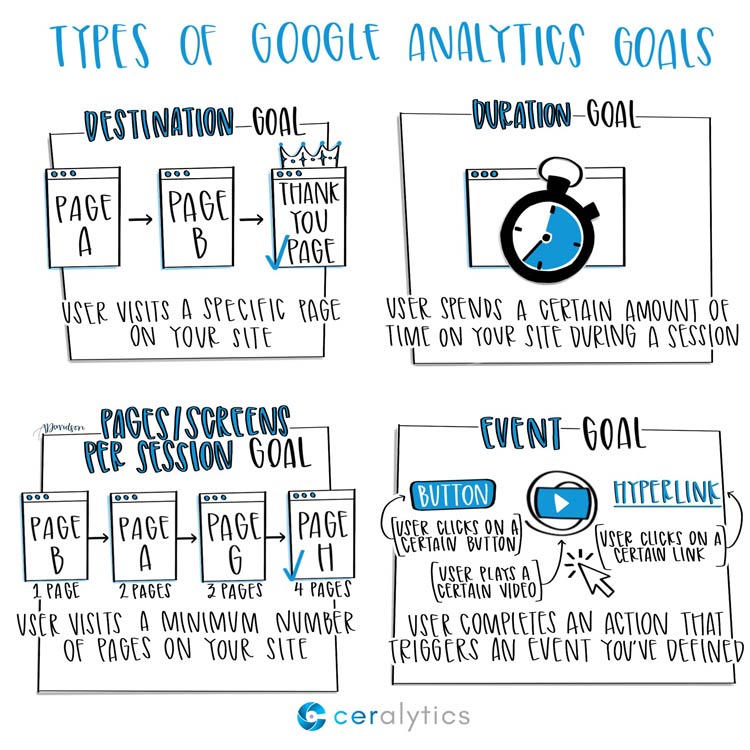What Data Is Google Analytics Goals Unable to Track: A Complete Guide
What Data Is Google Analytics Goals Unable to Track: A Complete Guide
Blog Article
Revealing the Blind Destinations: Recognizing What Google Analytics Goals Can not Gauge
In the world of digital analytics, Google Analytics stands as an effective tool for tracking and assessing on the internet user communications. Comprehending what Google Analytics goals can not gauge is important for gaining a thorough view of user habits and engagement.
Customer Habits on External Platforms
Comprehending how customers communicate on exterior platforms is crucial for maximizing online approaches. Outside platforms, such as social media sites networks, recommendation websites, and on-line forums, play a significant duty in driving web traffic to a company's website. By examining user actions on these platforms, organizations can get important understandings right into the performance of their marketing initiatives and the choices of their target audience.
One key element of individual behavior on external systems is the reference source. By tracking where the individuals are originating from, companies can determine which systems are driving one of the most traffic to their website. This information can help firms allot their resources better, concentrating on the systems that yield the best results.

Offline Interactions and conversions
Evaluating user behavior on external platforms provides beneficial understandings right into on the internet methods; nevertheless, thinking about offline conversions and interactions is equally crucial for a thorough understanding of a business's general performance. While Google Analytics excels at tracking on-line communications, it falls short in recording the full client journey that frequently includes offline touchpoints. Offline conversions, such as in-store acquisitions or phone queries, play a considerable role in many organizations' success. Neglecting these interactions can lead to a distorted sight of the performance of advertising campaigns and general company performance.

Attribution Beyond Last Click
When delving into the world of electronic marketing analytics, it ends up being crucial to look beyond the single touchpoint of the last click for a much more detailed understanding of attribution. While Google Analytics offers useful understandings right into customer behavior, relying entirely on last-click attribution can be restricting - what data is google analytics goals unable to track. Acknowledgment designs that surpass the last click supply a more nuanced view of the customer journey, taking right into account all the touchpoints that cause a conversion
Acknowledgment past the last click permits marketers to designate credit to numerous communications along the conversion path, giving a clearer image of the performance of various advertising and marketing networks. By checking out multi-touch attribution versions such as direct, time decay, or position-based attribution, companies can much better designate their advertising and marketing spending plans and enhance their techniques for maximum influence.
Understanding the impact of each touchpoint discover here in the conversion process is crucial for making educated decisions and optimizing ROI. By accepting attribution beyond the last click, businesses can obtain deeper understandings into customer habits and tailor their marketing initiatives better.
Cross-Device and Cross-Browser Monitoring

Likewise, cross-browser monitoring enhances cross-device tracking by recording individual habits as they switch over in between different web browsers. Comprehending just how customers interact with websites on different internet browsers can aid marketing professionals enhance their on-line experiences to make certain uniformity and capability throughout various systems.
Qualitative Information and Individual Intent
Recognizing individual intent with qualitative information analysis is essential for developing targeted electronic marketing strategies that reverberate with the demands and choices of the target market. Qualitative information offers insights into the 'why' behind user activities, losing light on inspirations, feelings, and preferences that quantitative data alone can not catch. By evaluating user comments, remarks, and communications, marketers can reveal beneficial information about user intent, permitting them to tailor their messaging, content, and offerings to much better straighten with what their audience is seeking.
Qualitative information likewise helps in recognizing the context in which customers involve with an internet site or app. This contextual understanding enables marketers to develop more relevant and personalized experiences, ultimately driving greater engagement and conversion rates. By delving into customer intent through qualitative information analysis, organizations can acquire a much deeper understanding of their target market, bring about much more efficient marketing strategies that meet individuals' requirements and expectations.
Conclusion
In verdict, Google Analytics goals have constraints in measuring individual behavior on outside systems, offline conversions, attribution past last click, cross-device and cross-browser monitoring, and qualitative information associated with individual intent. what data is google site link analytics goals unable to track. It is essential for services to be aware of these blind areas in order to supplement their information analysis with other devices and approaches to acquire a much more thorough understanding of their audience and enhance their total digital marketing techniques
By assessing user habits on these systems, organizations can gain important understandings more right into the effectiveness of their marketing efforts and the preferences of their target audience.
Examining customer actions on external platforms offers useful understandings right into on-line strategies; however, thinking about offline conversions and communications is equally crucial for a thorough understanding of a company's general efficiency.In electronic advertising and marketing analytics, moving beyond last-click acknowledgment to discover cross-device and cross-browser monitoring is important for acquiring an all natural understanding of user interactions throughout different systems and devices. By examining customer responses, comments, and communications, online marketers can discover beneficial details about user intent, permitting them to tailor their messaging, web content, and offerings to better align with what their audience is looking for.
By diving into customer intent through qualitative data evaluation, companies can acquire a much deeper understanding of their target audience, leading to more effective marketing strategies that fulfill users' expectations and demands.
Report this page